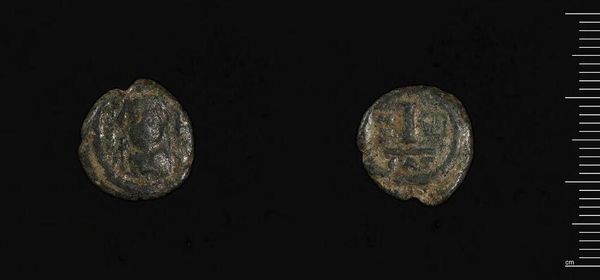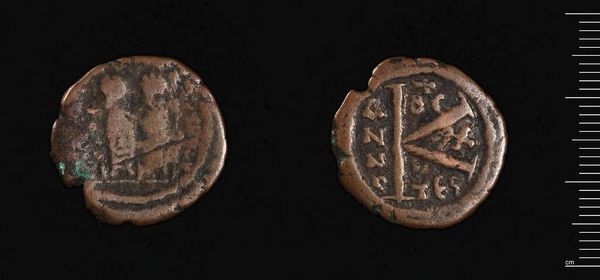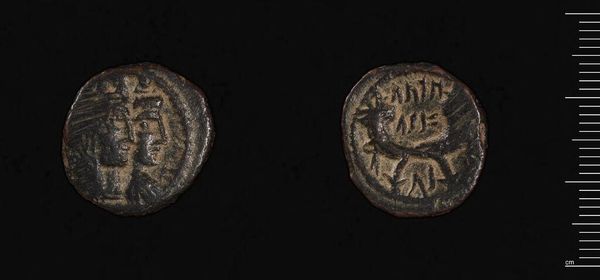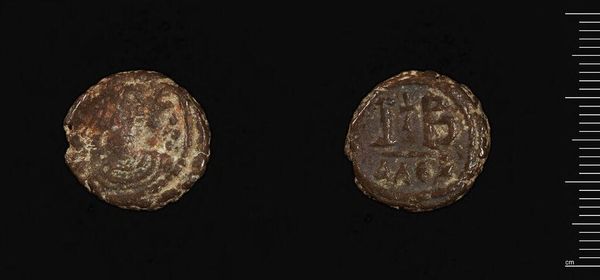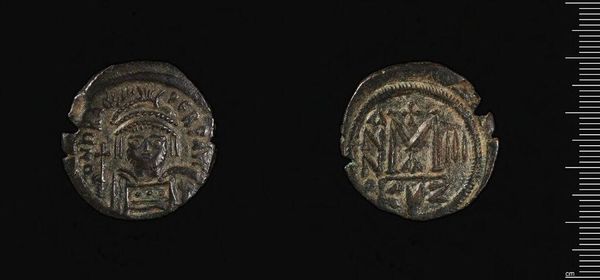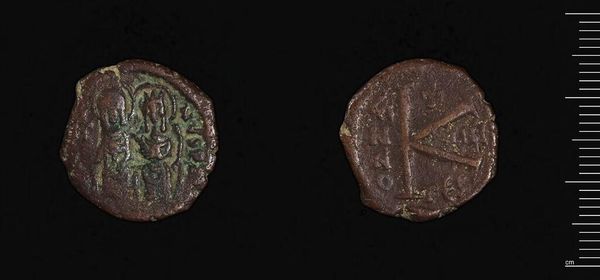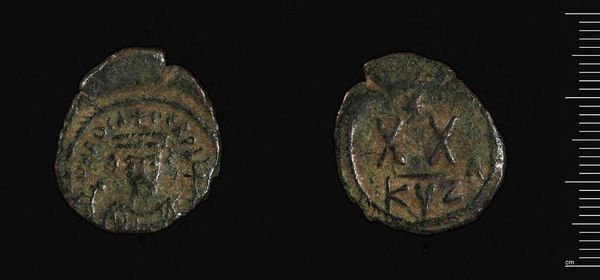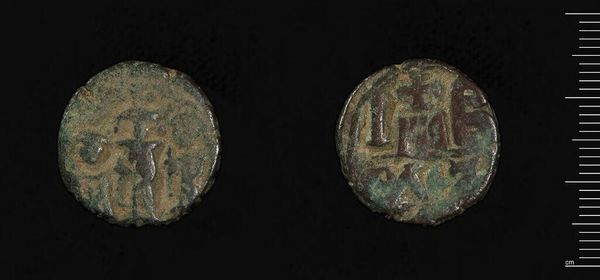
Dimensions: 5.4 g
Copyright: CC0 1.0
Editor: Here we have a Dodecanummium of Herakleios, Alexandria, created by Abd-al-Malik of the Umayyad Dynasty. It’s small, only 5.4 grams, and worn, but I find its crude depiction of a face quite striking. How do you interpret the composition and materiality of this coin? Curator: I would observe that the coin's very form speaks to function. Its circular shape, though imperfect due to wear, is intrinsically tied to its purpose as a unit of currency, facilitating exchange. The bas-relief portrait and inscription, while degraded, still present a deliberate interplay of figuration and text. What symbolic weight do you attribute to these elements? Editor: I suppose the face represents authority, while the inscription denotes value. Is there more to it? Curator: Precisely. Consider the formal tension between the effigy’s static frontality and the dynamic potential of the surrounding inscription. It is a language of power, codified in miniature. Editor: I see! So the coin’s form and imagery work together to communicate authority and value in a compact design. Thanks! Curator: Indeed. A study in functional art.
Comments
No comments
Be the first to comment and join the conversation on the ultimate creative platform.
